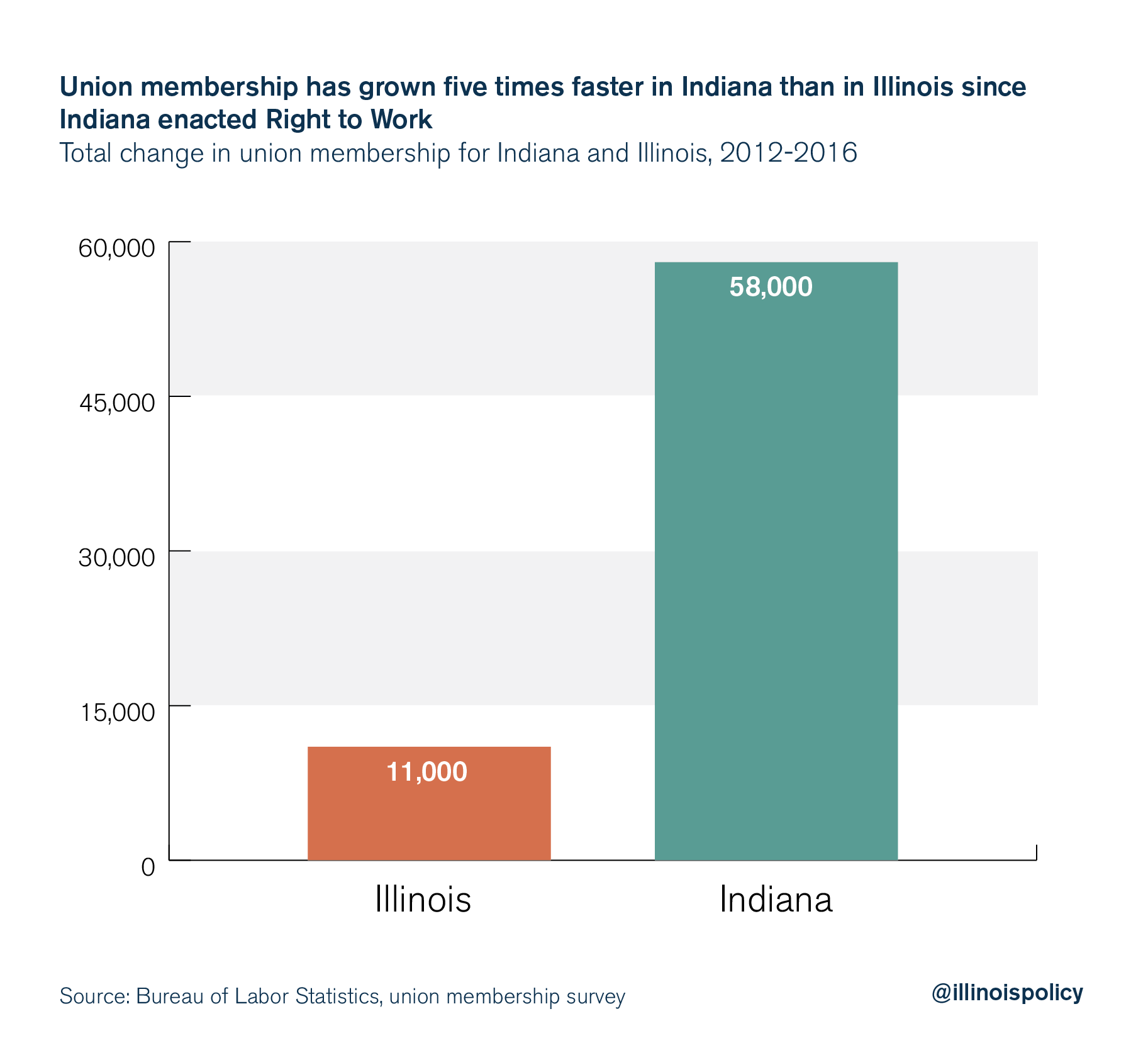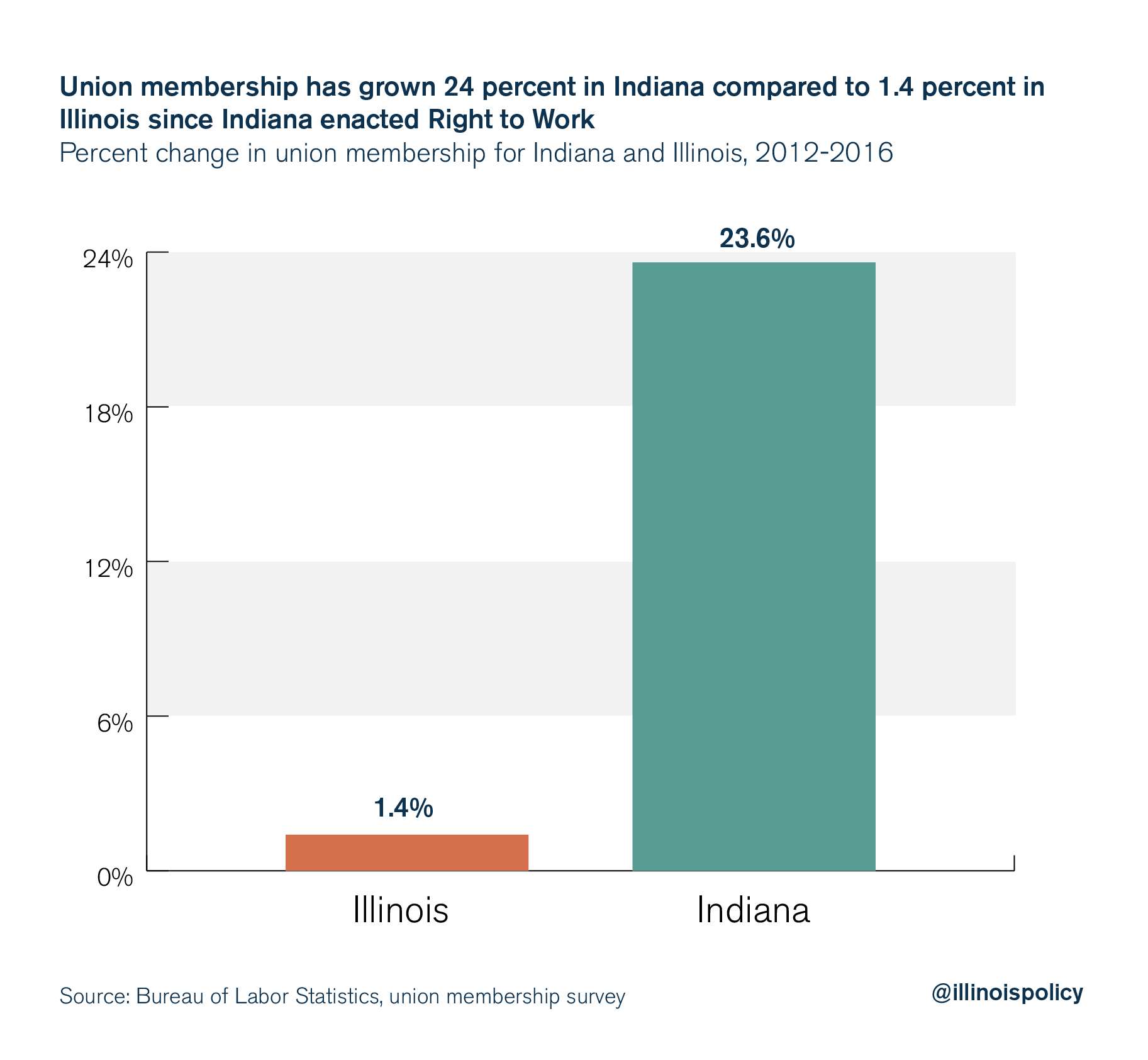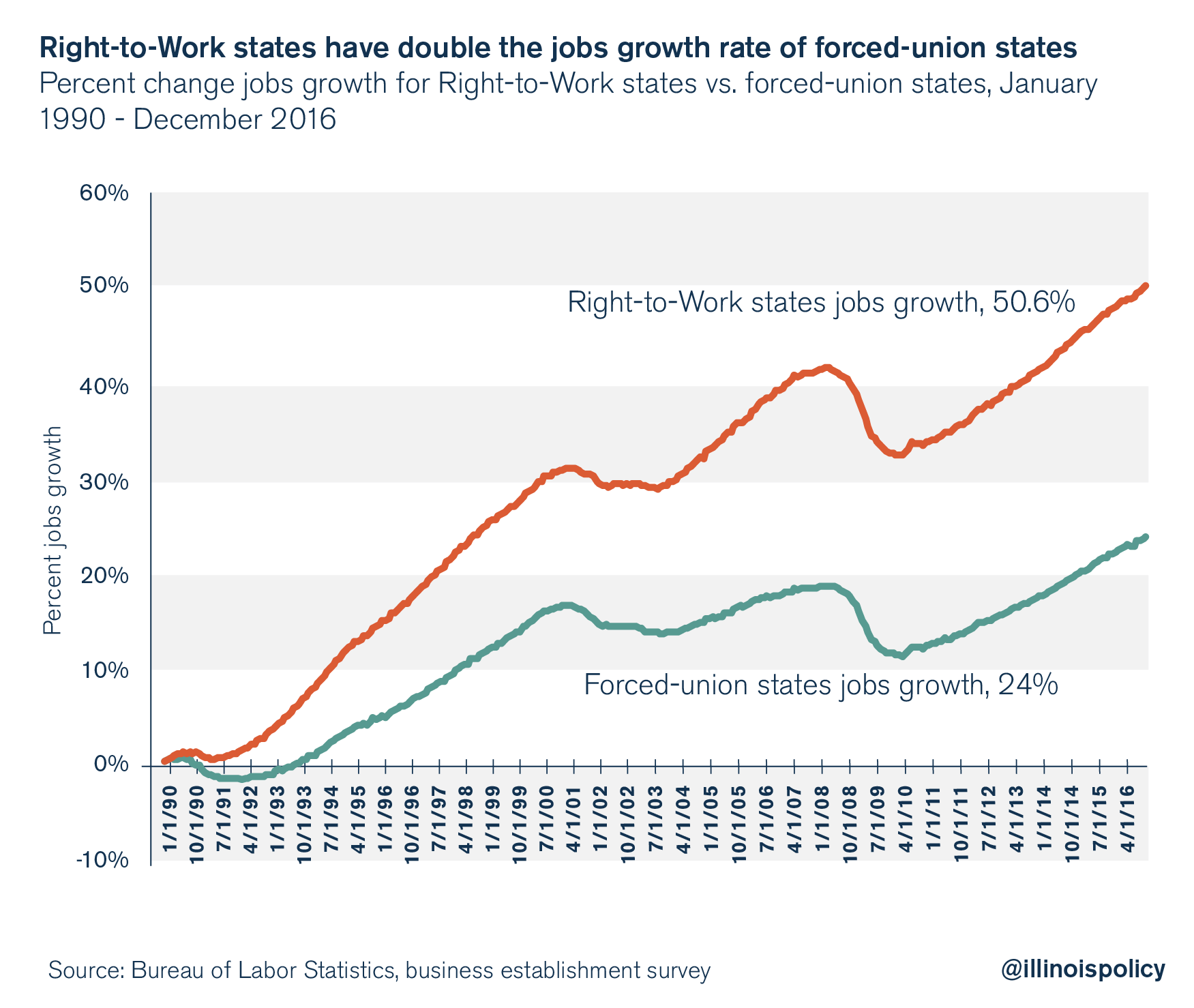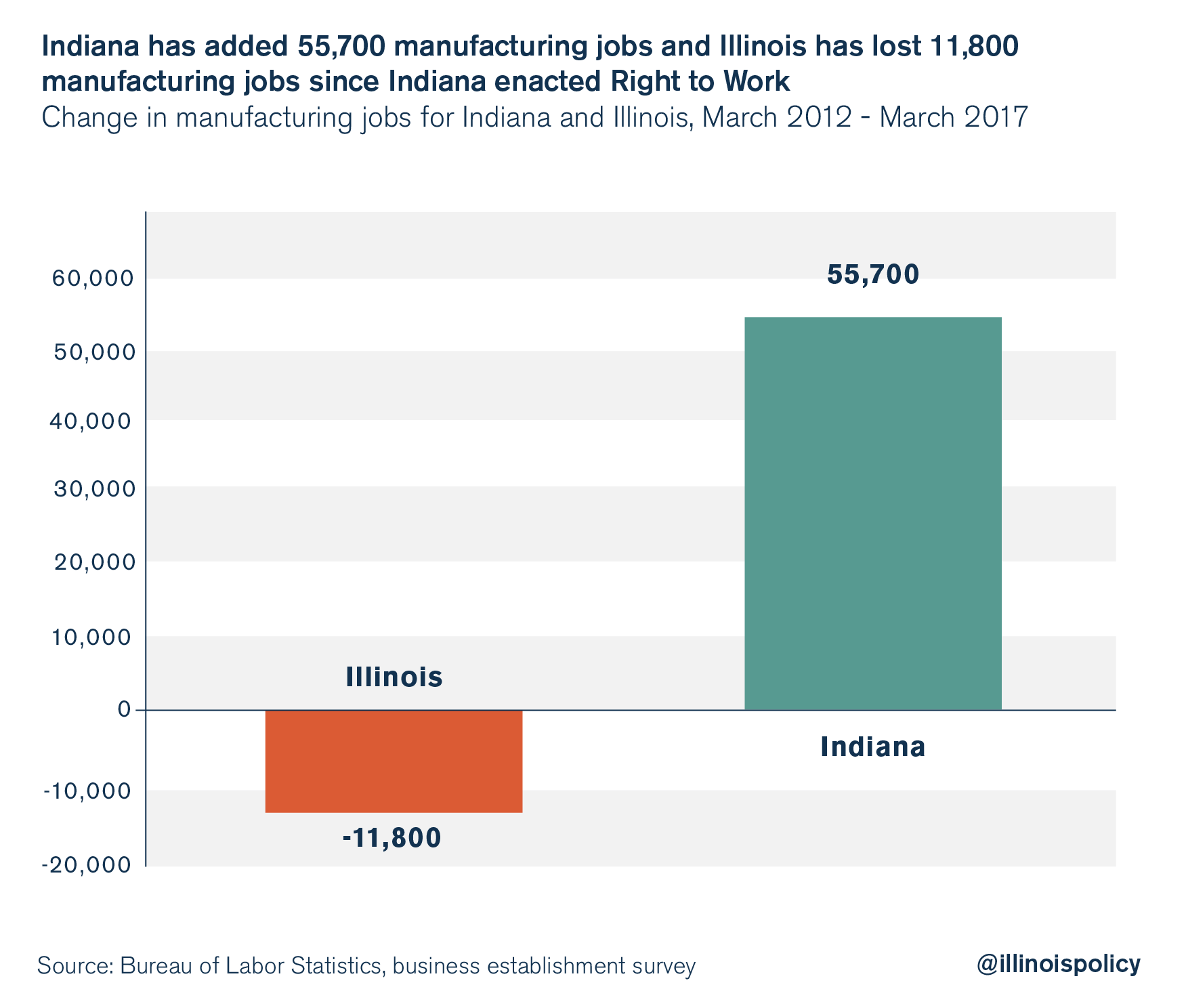Indiana has added five times more union members than Illinois since passing Right to Work
Indiana’s sharp rise in union members is due to its robust economic growth and increase in manufacturing jobs, while Illinois’ economy continues to lose factories and sees little growth in union members.
Indiana is a Right-to-Work state – it’s also home to union growth five times greater than neighboring Illinois, where forced-unionism is still the law of the land.
One of the most common criticisms of Right-to-Work laws is that they make it harder for workers to form unions and collectively bargain. But if this is true, then why is union membership growing so much more rapidly in Indiana than in Illinois?
The short answer? Jobs growth and population growth.
Right to Work doesn’t hurt unions – it just gives workers a choice
Right-to-Work laws guarantee that workers have a choice in whether or not they join and pay fees to a union. They don’t prohibit unions, and they don’t make it harder to organize unions. But without Right to Work, all workers in a unionized workplace must pay union fees or else they can be fired, even if they don’t want union representation.
That’s unfair. Right to Work makes sure that unions earn the fees and dues they collect from members. Gary Casteel, the Southern region director for United Auto Workers even admitted this fact in a statement reported by the Washington Post, saying:
“This is something I’ve never understood, that people think right to work hurts unions … To me, it helps them. You don’t have to belong if you don’t want to. So if I go to an organizing drive, I can tell these workers, ‘If you don’t like this arrangement, you don’t have to belong.’ Versus, ‘If we get 50 percent of you, then all of you have to belong, whether you like to or not.’”
Indiana’s economy is thriving – and so is union membership
Indiana shows that unions certainly can grow in Right-to-Work states. And union membership is growing much faster in Indiana than it is growing in Illinois.
Indiana passed statewide Right-to-Work legislation in 2012. Since then, union membership has grown by 58,000 in Indiana, compared to union membership growth of only 11,000 in Illinois, according to union membership data from the Bureau of Labor Statistics.

The comparison is even starker in percentage terms. Indiana’s economy is half the size of Illinois’, yet they have added five times as many union members since enacting Right to Work.
Union membership is up 24 percent in Indiana since enacting Right to Work, compared to growth of just over 1 percent in Illinois.

One of the reasons Right-to-Work states can experience better union membership growth is because they generally have better jobs growth. Taken as a group, Right-to-Work states have double the jobs growth rate of forced-union states since 1990.

Indiana has experienced much better jobs growth than Illinois in sectors that tend to have more unionization. For example, Indiana has added 55,700 manufacturing jobs since enacting Right to Work, while Illinois has lost 11,800 manufacturing jobs in the same time period.

Illinois should embrace worker freedom
These facts put Right-to-Work opponents in a bind. They can no longer claim that Right to Work crushes union membership because the comparison of Indiana and Illinois disproves that claim. And if they want to argue that Indiana has lower wages since Right to Work, then they have to address the fact that Indiana’s lower wages have happened with better union membership growth than most states have achieved, especially Illinois.
Right to Work should be debated on its merits in Illinois. The Land of Lincoln is surrounded by Right-to-Work states, and has the weakest industrial labor market in the region.
The facts about Illinois and Indiana make it clear: A Right-to-Work law does not crush union membership, nor does it prohibit collective bargaining. But Illinois has certainly figured out the formula to stunt union growth by having slow job creation and heavy out-migration.
Unions need what all Illinoisans need – more business formation, outside investment, productivity gains and job creation. Illinois lawmakers should get about the business of making the Land of Lincoln a more tolerable state for business, and then all workers will benefit.
